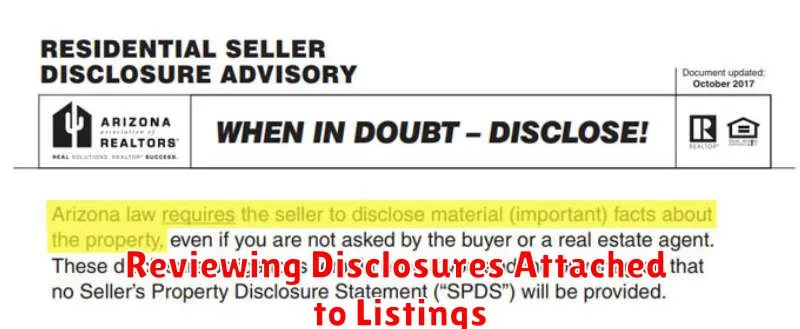Navigating the real estate market can feel overwhelming, especially when faced with a multitude of listings. Understanding how to read a real estate listing effectively is a crucial first step in the home-buying or renting process. This guide will equip you with the knowledge and tools to dissect every detail, from deciphering real estate jargon to identifying potential red flags. Learn how to analyze property listings like a seasoned real estate professional, empowering yourself to make informed decisions and find the perfect property that meets your needs.
Whether you’re a first-time buyer, a seasoned investor, or simply curious about the real estate market, learning to interpret listings is an invaluable skill. This article will break down the essential components of a typical real estate listing, explaining the significance of each piece of information. We’ll explore everything from understanding property descriptions and asking prices to interpreting home features and location details. By the end, you’ll be able to confidently evaluate real estate listings and identify properties that align with your specific criteria. Start your journey toward becoming a real estate listing expert today.
What the Headline Actually Tells You
Headlines are designed to grab your attention and entice you to read further. They often summarize the main point of an article in a concise and engaging manner. Understanding what a headline truly communicates is crucial for efficient information consumption. A good headline will convey the topic and the angle the article takes on that topic. It might also hint at the target audience and the overall tone (e.g., serious, humorous, informative). Analyzing these elements allows you to quickly assess if the article is relevant to your interests and worth your time.
Beyond simply stating the topic, effective headlines often frame the information in a particular way. This framing can include highlighting the significance or impact of the information, posing a question that the article aims to answer, or emphasizing a specific perspective on the issue. Pay attention to the specific words used in the headline, as strong verbs and evocative adjectives can shape your understanding of the content before even reading it.
By critically examining headlines, you can develop your ability to quickly assess the potential value of an article and prioritize your reading accordingly. This skill is particularly important in today’s information-saturated world, where we are constantly bombarded with headlines vying for our attention.
Decoding Common Listing Jargon
Real estate listings often employ specific jargon that can be confusing for the average buyer. Understanding these terms is crucial for interpreting listings accurately and making informed decisions. Contingent means the sale is dependent on certain conditions being met, such as the buyer securing financing or selling their existing home. Pending indicates a contract has been accepted and the sale is moving forward, but the deal hasn’t closed yet. Earnest money is a deposit made by the buyer to demonstrate their serious intent to purchase, showing good faith to the seller.
Other frequently encountered terms include “as-is”, which signifies the property is being sold in its current condition with no repairs or warranties provided by the seller. “Move-in ready” suggests the property is in good condition and requires minimal work before occupancy. Closing costs refer to the expenses associated with finalizing the transaction, including appraisal fees, title insurance, and transfer taxes. Being familiar with these terms empowers buyers to navigate the real estate market more effectively.
Finally, understanding terms related to ownership is also important. Freehold signifies outright ownership of the property and the land it sits on. Leasehold means the owner has a lease for the property for a specific period, but doesn’t own the land itself. Knowing the difference can significantly impact long-term ownership plans.
Photos vs Reality: What to Look For
In the digital age, photos often present an idealized version of reality. Lighting, angles, and editing can dramatically alter the appearance of products, places, and even people. Understanding these manipulations is crucial for discerning the true nature of what’s being depicted. Pay close attention to details that seem too perfect. Unnatural shadows, overly smooth textures, and unrealistic colors can be indicators of digital enhancement.
When evaluating photos, consider the context. Look for clues that might reveal staging or manipulation. For example, is the lighting too consistent? Are there any inconsistencies in the background? Does the perspective seem distorted? These subtle cues can help you determine if the image accurately reflects reality. Remember to cross-reference with multiple sources and seek out unedited images or videos when possible.
Developing a critical eye is essential for navigating the visual landscape. By understanding the limitations and potential for manipulation in photography, you can make more informed decisions based on a realistic understanding of the subject. Remember, a photograph captures just a single moment, and it can be easily manipulated to tell a specific story, which may or may not be entirely truthful.
How to Interpret Square Footage and Price

Square footage is a crucial factor in determining a property’s value. It represents the measurable area within a property’s boundaries, typically expressed in square feet. A larger square footage often, but not always, translates to a higher price, all other factors being equal. Understanding the relationship between square footage and price requires considering other influential factors such as location, condition, and amenities.
Price per square foot is a useful metric for comparing properties. Calculated by dividing the listing price by the square footage, this figure provides a standardized way to assess value. A lower price per square foot may indicate a good deal, but it’s essential to consider the overall context. A property with a low price per square foot in a less desirable location might not be as valuable as a smaller property with a higher price per square foot in a prime area. Therefore, using price per square foot in isolation can be misleading.
Beyond these metrics, consider the property’s layout and usability. A well-designed space can feel much larger and more functional than a poorly designed space with the same square footage. Careful evaluation of the floor plan and how the space meets your needs is crucial. Features like high ceilings, natural light, and efficient storage can significantly impact the perceived value and livability of a property regardless of the total square footage.
Red Flags Hidden in Descriptions
Job descriptions, while designed to attract candidates, can sometimes contain subtle red flags that hint at potential problems within a company or with the specific role. Vague language surrounding responsibilities or required skills can indicate a lack of clarity within the team or a rapidly shifting scope of work. Similarly, overly enthusiastic language filled with buzzwords like “rockstar,” “ninja,” or “guru” can sometimes mask a lack of substance or a demanding, high-pressure environment. Pay close attention to the overall tone and look for inconsistencies or contradictions.
Another red flag is the emphasis, or lack thereof, on work-life balance. While not every company will explicitly mention flexible hours or remote work options, descriptions that highlight the need for “constant availability” or “around-the-clock commitment” may suggest an expectation of unpaid overtime or a culture of overwork. Similarly, focusing solely on perks like ping-pong tables and free snacks, without mentioning benefits like healthcare or retirement plans, might indicate an attempt to distract from deeper issues. Salary information being absent is another common red flag, potentially indicating a lack of transparency or an unwillingness to negotiate fair compensation.
Finally, look closely at how the company describes its culture and values. Generic statements about “teamwork” and “innovation” without concrete examples can be a warning sign. More importantly, pay attention to any language that feels dismissive or discriminatory. Descriptions that prioritize “cultural fit” over skills and experience can sometimes signal a homogeneous environment resistant to diverse perspectives. A thorough analysis of the job description can reveal these subtle cues and help you make an informed decision about whether the opportunity is truly a good fit.
Understanding Location Details
Location details provide critical information for various purposes, including navigation, business operations, and emergency services. These details typically encompass a range of data, including latitude and longitude coordinates, which pinpoint a precise location on Earth. They can also include street address, city, state/province, zip/postal code, and country. Accurate location details are essential for effective communication and resource allocation.
Beyond basic geographic information, location details can also incorporate more specific data such as building number, floor, or even room number. This granular level of detail is particularly important for indoor navigation or locating specific assets within a complex. Furthermore, additional information such as elevation, time zone, and local landmarks can provide a more complete understanding of a location.
The methods used to determine location details vary. GPS technology provides real-time location information based on satellite signals. Geocoding services translate addresses into geographic coordinates. Other methods include cell tower triangulation, Wi-Fi positioning, and IP address lookup. The choice of method depends on the required accuracy and availability of technology.
Contacting the Right Person
Reaching the right person within an organization can significantly impact the success of your communication. Whether you’re seeking information, applying for a job, or trying to resolve an issue, directing your inquiry to the appropriate individual saves valuable time and increases the likelihood of a positive outcome. Start by identifying the department or area most relevant to your need. Researching the organizational structure on their website or LinkedIn can often reveal contact information for specific roles.
If you’re unsure who to contact, reaching out to a general inquiry point, such as a receptionist or a general contact email address, is a good first step. Clearly explain your purpose and inquire about the most relevant contact person for your specific needs. Providing a concise summary of your inquiry will help them direct you to the right individual or department. Remember to be polite and respectful to everyone you interact with, even if they are not the final person you need to reach.
When you finally connect with the right person, be prepared to clearly and concisely explain your reason for contacting them. Having all necessary information at hand, such as your account number, order number, or a specific question you need answered, will help streamline the communication process. Follow up if you haven’t received a response within a reasonable timeframe. Persistence and a professional approach are often key to achieving a successful outcome.
Reviewing Disclosures Attached to Listings

Real estate disclosures are crucial documents providing potential buyers with important information about a property. Carefully reviewing these disclosures helps buyers make informed decisions and avoid potential problems down the road. Disclosures cover a range of topics, from known material defects and past repairs to environmental concerns and neighborhood characteristics. Take the time to thoroughly read through each disclosure and ask questions if anything is unclear. Don’t hesitate to consult with a real estate professional or attorney for further clarification or advice.
Pay close attention to disclosures related to property condition. These can include information about the foundation, roof, plumbing, electrical systems, and any known issues or previous repairs. Look for disclosures related to environmental hazards such as lead paint, asbestos, radon, or mold. Understanding the property’s history can save you from costly surprises in the future. It’s also important to review disclosures concerning legal and financial matters related to the property, such as easements, property lines, or pending litigation.
Remember, the seller is obligated to disclose known defects. However, it’s still a good idea to conduct your own due diligence. Consider hiring a professional home inspector to assess the property’s condition and identify any potential problems not mentioned in the disclosures. By thoroughly reviewing disclosures and conducting your own investigations, you can minimize risks and make a confident decision about purchasing a property.
Using Online Tools for Research
Online research tools offer invaluable resources for gathering information efficiently. Search engines like Google Scholar and specialized databases provide access to a wealth of scholarly articles, books, and other publications. Citation management tools like Zotero and Mendeley help organize research materials and generate bibliographies, saving significant time and effort. Utilizing these tools effectively can greatly enhance the research process.
Beyond search engines and citation managers, numerous other online tools can be beneficial. Online dictionaries and thesauruses can clarify terminology and expand vocabulary. Digital archives and online libraries provide access to primary source materials, historical documents, and other unique resources. Note-taking applications like Evernote and OneNote allow researchers to collect and organize notes, annotations, and other research-related information in a centralized location.
While online tools are incredibly useful, it’s crucial to evaluate the credibility of sources. Be mindful of website domains, author credentials, and publication dates. Cross-referencing information and consulting with reputable sources helps ensure the accuracy and reliability of research findings. By utilizing these resources responsibly and critically, researchers can significantly enhance their work.
Taking Notes for Property Visits
Taking thorough notes during property visits is crucial for remembering details and making informed decisions later. Focus on key aspects like the property’s condition (e.g., cracks, water damage, needed repairs), features (e.g., appliances, fireplace, layout), and surroundings (e.g., neighborhood noise, nearby amenities, traffic). Don’t hesitate to jot down your initial impressions and gut feelings about the space, as these can be valuable when comparing properties later on.
Organize your notes systematically. Consider using a consistent format for each property, perhaps including sections for address, price, date of visit, and specific observations. You can create a checklist of essential items to ensure you cover all important aspects during each visit. Taking photos or videos can also be beneficial, but detailed written notes provide a readily accessible and searchable record of your observations.
Review your notes promptly after each visit while the details are still fresh in your mind. This allows you to add any missing information or clarify ambiguous points. Comparing notes across multiple properties will help you weigh the pros and cons of each option and ultimately make a well-informed decision.

